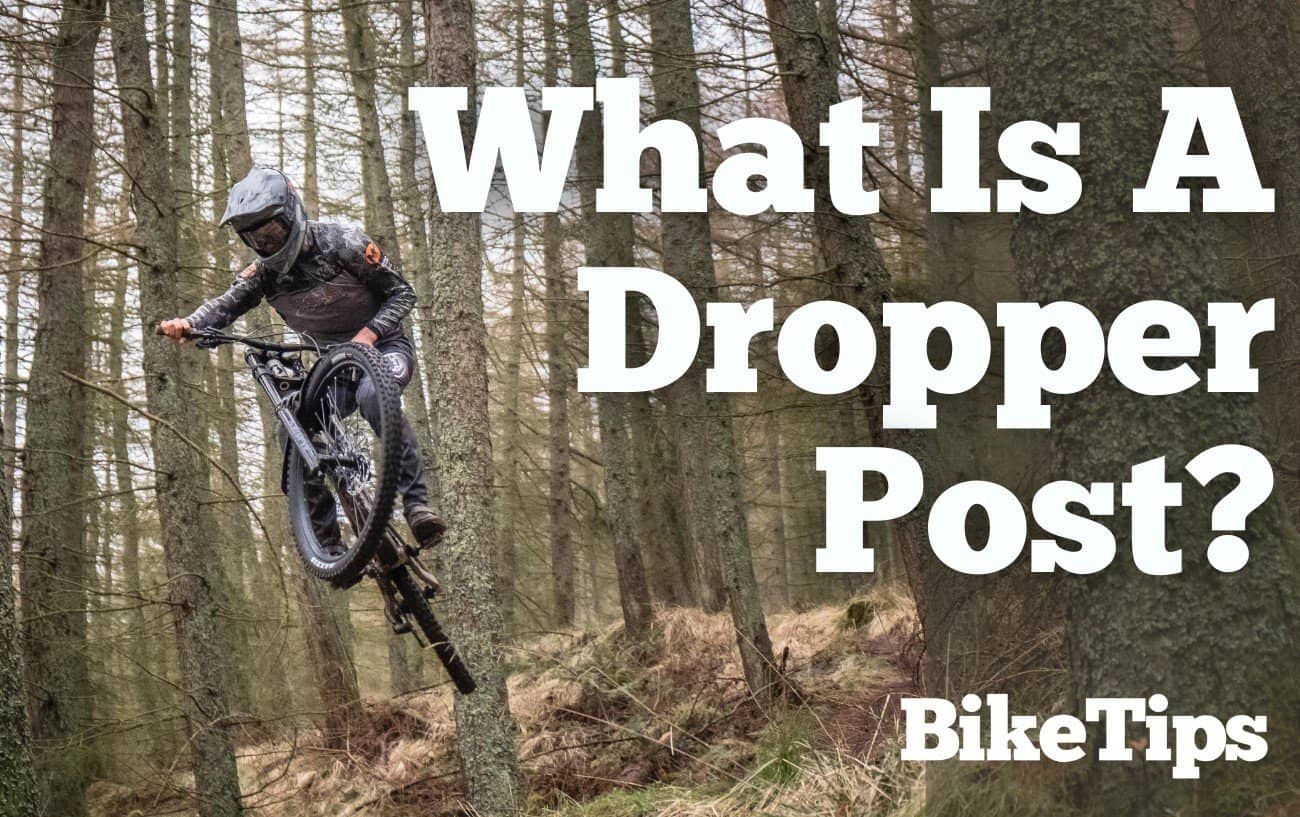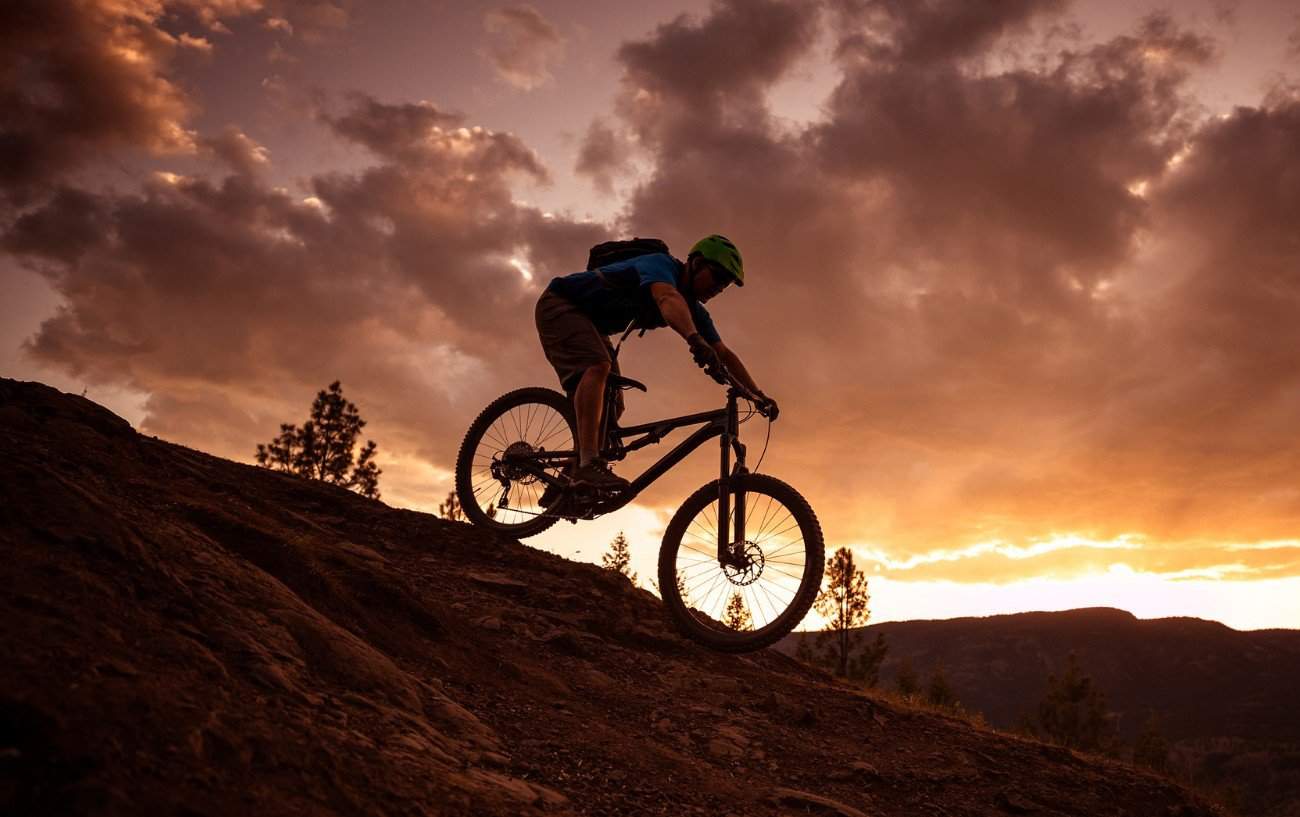Barely a decade ago, moveable dropper posts for bike seats were a novelty, reserved for a few pioneering riders pressing ahead of the technological curve.
These days, you’ll be hard-pressed to find a decent mountain bike without one – and they’ve even started cropping up in the road racing peloton too.
For the uninitiated, this leaves us wondering: What is a dropper post, and why are they so popular?
Put simply, a dropper post allows you to drop (and later raise back up) the height of your bike seat while riding at the pull of a trigger, without dismounting.
As a qualified cycling coach with years of experience in mountain biking, I’m here to help you get to grips with what’s fast becoming a biking essential. We’ll be walking you through:
- What Is A Dropper Post?
- What’s The Point Of A Dropper Seatpost?
- How Does A Dropper Post Work?
Ready to revolutionize your downhill riding?
Let’s get started!

What Is A Dropper Post?
A dropper post allows a cyclist to lower and raise their seat height while riding, without having to get off the bike.
Though they’ve only become commonplace in recent years, dropper posts have been around in mountain biking circles since the early days of the sport in the 1980s.
The original dropper post was the Hite-Rite, which remains something of a cult classic.
The Hite-Rite was pretty rudimentary by today’s standards, featuring an external spring that pushed the saddle up when a lever at the bottom of the seat post was pulled.
What’s the point of a dropper Seatpost?
For mountain bikers, the optimal seat height for riding uphill and descending is not the same.
For uphill cycling, the best seat height is the same as on any other bike. For the most efficient power delivery while pedaling, there should be a slight bend in the knee at the bottom of the pedal stroke.
If in doubt, you can check out our qualified bike fitter Robbie Ferri’s Ultimate Guide to Seat Height here.
However, for downhill riding, a lower seat height offers massive advantages.
For starters, a dropped seat is safer. The reduced seat height lowers your overall center of gravity and allows you to throw your weight backward under heavy braking, both of which reduce the chances of you flying over the handlebars when slamming the brakes on the steeps.
Dropping the seat also improves handling. Having the seat out of the way makes you more maneuverable on the bike, as you can easily throw your weight around for corners and bumps without the saddle interfering. The lower center of gravity also helps keep the bike dialed in round any bumps and bends.
Before dropper posts became commonplace, mountain bikers had three options to get around this mismatch in ideal seat height:
- Option 1: Stop, dismount, and change the seat height manually. Frustrating, time-consuming, and a complete non-starter for MTB racers.
- Option 2: Compromise on a seat height between the two. Effectively the worst of both worlds.
- Option 3: Position themselves behind the seat for descents. It’s awkward, gives you significantly less control over your body position than a dropped post, and risks a nasty impact between the seat and your pubic bone if you crash.
Dropper posts remove the need for any of these compromises.

And now, it seems road cyclists are finally waking up to the benefits of dropper seatposts too.
At the 2022 Milan-San Remo Classic, Matej Mohorič stunned the field by using a dropper post to blast clear of his rivals on the final descent of the Poggio and claim an iconic victory.
“We had this plan for a long, long time now. I was thinking at first [the dropper post] isn’t going to make a huge difference on the descent, but then I tried it in training and I was amazed at how much safer it is. If you go normally, it gives you way more control of the bike, and if you go full gas, of course you can go a little bit faster. It’s easier to avoid mistakes, or correct them when they happen.”
Matej Mohorič, Milan-San Remo 2022
However, the appeal of a dropper post is slightly different for a professional road racer than for a mountain biker.
While Mohorič evidently appreciated the extra safety and control in the descent, there’s one advantage that stands head and shoulders above the rest: aerodynamics.
The dropped seat allows the rider to adopt a more aerodynamically slippery riding position, tucked low over the frame to reduce drag.
This has extra relevance for professional road racers, as it exploits a loophole in the UCI‘s 2021 ban on the so-called “supertuck“.
The supertuck saw riders drop their riding position on downhill sections so they lay forward across the top tube, with their chest on the handlebars and their head hanging over the front wheel. It was lightning-quick, widely used, and inherently dangerous.
However, the wording of the UCI’s ban only forbade sitting on the top tube – but not dropping your seat right down to the top tube.
So, Mohorič was able to get into a similarly aerodynamic position as the super tuck, but without falling foul of the regulations or putting himself at increased risk of a crash.

How Does A Dropper Post Work?
Dropper post designs have come a long way from the spring-loaded external arm of the Hite-Rite.
Gone are the days of having to reach down to pull a lever underneath the saddle to release the dropper post. Most modern droppers are actuated with a lever or button on the handlebars, which is usually attached by cable to the seat post.
Some models communicate with the dropper post electronically, which is useful for frames with internal cabling, but these are less common (and more expensive) than cabled versions.
You can also find modern designs that still feature a lever under the seat if that’s your preference.
Modern dropper posts have a two-piece telescopic design that operates much like a desk chair.
The lower, outer cylinder clamps into the frame, while the inner cylinder is free to move up and down independently, but remains locked in position when the lever or button isn’t being pressed.
Just like the desk chair, the seat will slide down if you’re sitting on it while the lever is pulled. If you take your weight off the seat with the lever pulled, it will extend back up to a preset height – which should be your most efficient pedaling height.

Dropper Posts – Done and Dusted!
Now you’ve got all the knowledge on dropper posts, why not give one a test spin in your own riding?
Whether you’re a rider who likes throwing yourself down a treacherous MTB trail or a road racer who wants to draw out every last second of aero advantage on the descents, more and more cyclists are waking up to the advantages of fitting a dropper post.



